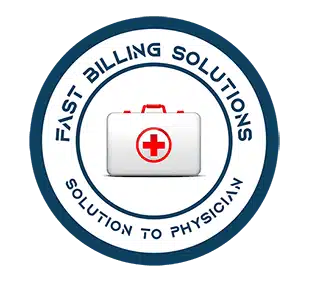
Electronic Health Record (EHR) with the passage of the HITECH Act in 2009, the federal government began requiring physicians to adopt EHR technology. The act mandates “meaningful use” of EHRs by providing incentivized Medicare and Medicaid payments to physicians who use the technology and imposing Medicare penalties on non-adopters. Since then, physicians have voiced concern about decreased productivity and revenue with Electronic Health Record (EHR) implementation.
What is Electronic Health Record (EHR)?
An Electronic Health Record (EHR)is an electronic version of a patients medical history, that is maintained by the provider over time, and may include all of the key administrative clinical data relevant to that persons care under a particular provider, including demographics, progress notes, problems, medications, vital signs, past medical history, immunizations, laboratory data and radiology reports The EHR automates access to information and has the potential to streamline the clinician’s workflow. The Electronic Health Record (EHR) also has the ability to support other care-related activities directly or indirectly through various interfaces, including evidence-based decision support, quality management, and outcomes reporting.
EHRs are the next step in the continued progress of healthcare that can strengthen the relationship between patients and clinicians. The data, and the timeliness and availability of it, will enable providers to make better decisions and provide better care.
For example, the Electronic Health Record (EHR)can improve patient care by:
- Reducing the incidence of medical error by improving the accuracy and clarity of medical records.
- Making the health information available, reducing duplication of tests, reducing delays in treatment, and patients well informed to take better decisions.
- Reducing medical error by improving the accuracy and clarity of medical records
Electronic Health Record (EHR) Strategies to Increase Productivity
Study results have been mixed, with some studies showing decreased productivity and others showing stable or increased productivity after implementation. Given these inconsistent results, it’s reasonable to conclude that success varies among practices with respect to EHR adoption.
So how do you implement an Electronic Health Record (EHR) and maintain or improve your productivity? Here are five strategies to consider.
1. Provide Quality Training
Some people in your practice may be technical whizzes. Most are probably not and will require in-depth training to begin feeling comfortable and efficient using an Electronic Health Record (EHR). Successful training requires an initial assessment of physician and staff computer skills, several days of individualized in-house training, as well as ongoing feedback sessions and tutorials. One training technique that has been shown to be effective is to create peer “super users” within the practice who can help others get up to speed with the new system.
2. Delegate Tasks to Your Staff
The work flow of your practice will change as you adapt to using an Electronic Health Record (EHR). One way to improve the new work flow and increase efficiency is to delegate certain data entry tasks to support staff. You can enable medical assistants and nurses to enter vital signs, social and family histories, problem lists, and medical reconciliation into the electronic chart. You can even grant certain staff the ability to enter orders that are later electronically co-signed by you. Each task you delegate is less time that you spend at the computer and more time available for your patients.
3. Customize Your EHR
Do you like your notes and charts formatted a certain way? Do you order certain tests frequently? Almost all EHRs allow for customizable templates as well as ways to create lists of “favorite” or frequently used orders and order sets. Customizing your Electronic Health Record (EHR) can significantly decrease the number of “clicks” you need to make for each patient encounter.
4. Decrease Your Typing
For years, physicians used paper charts and transcription services, so it’s not surprising many of them feel that typing slows them down. Consider working with a medical scribe who not only is a speedy typist but who is also trained in medical terminology as well as effective and thorough charting. If hiring a scribe seems like it would be too much of an expense, consider purchasing voice recognition software to decrease your burden of typing and boost your productivity.
5. Implement a Patient Portal
Patient portals are convenient for your patients because they allow people access to their health information online. But patient portals can also be convenient for your practice and can even improve your office’s efficiency. Ask your patients to fill out new health information, issues, and concerns from home a day to two before coming in to see you, thus allowing you to have access to patient questions in advance and to save time during appointments. Encourage patients to use the portal to request and “pick up” prescription refills, referrals, and lab test orders, as well as to schedule office visits – all of which will free up your support staff to attend to other duties.
Since the passage of the HITECH Act, medical practices have been mandated to adopt EHRs. While the transition to new Electronic Health Record (EHR) technology can be challenging, various strategies can be used to enable a practice to quickly increase productivity and revenue.
Fast Billing Solutions is an excellent orginazition with its customized solutions offered to the doctors and the hospitals for their business operations needs nationwide. We have been able to help health care providers to increase their collections and profits by an average of 10-15 percent.
We has been a pioneer organization for medical billing & coding in US. We have been in medical billing & coding industry for over a decade now and provide highly experienced medical biller that help your healthcare practice to gain a competitive edge. Our medical biller & coder experts guarantee accuracy levels up to 98% at highly cost-effective prices and within a quick turnaround time. Contact us for more details.
To Book a Free Demo. click here
Read more: What is Medical Billing? 4 Important Tips. , What is Medical Coding? A Simple Justification.
